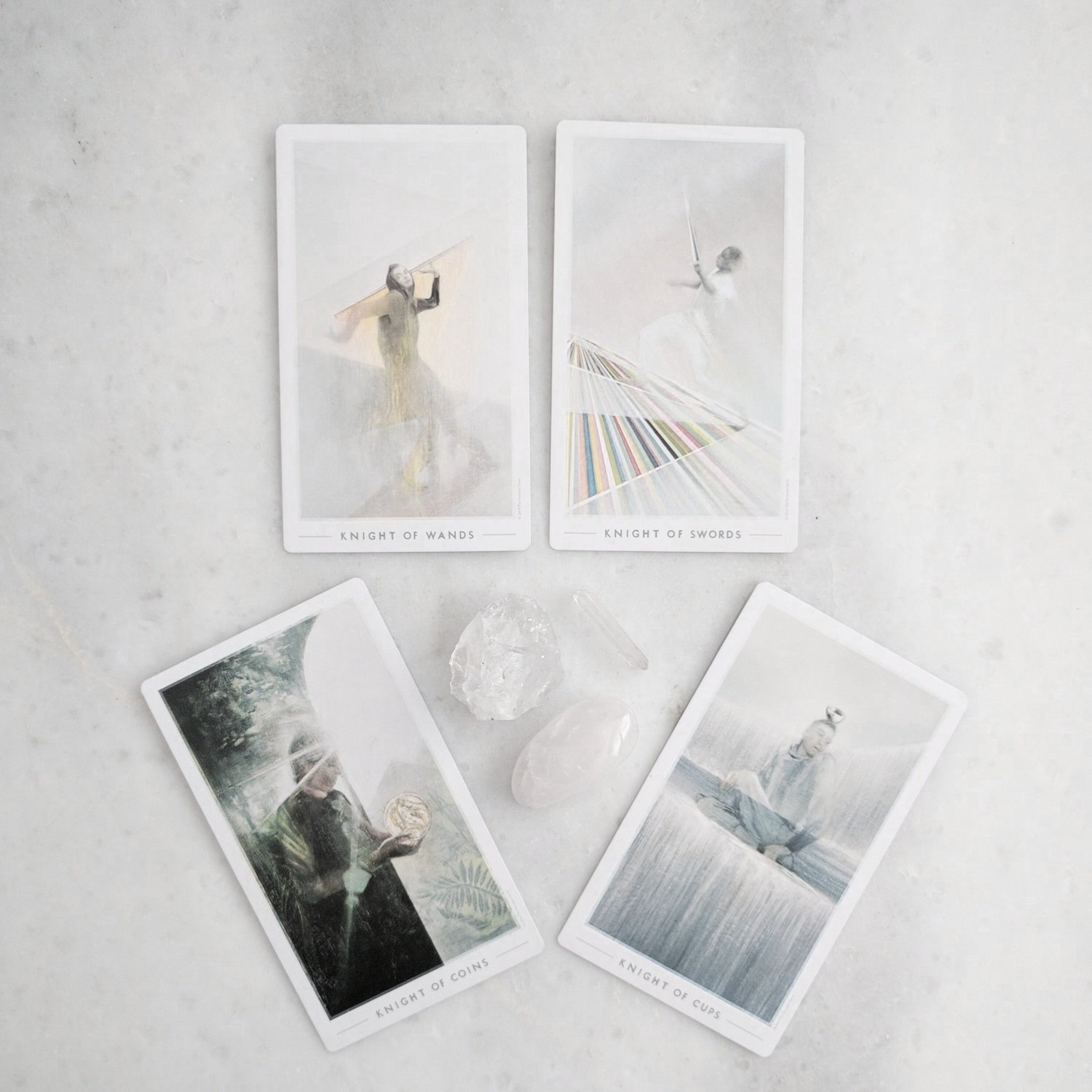7 Tips For Tarot Beginners
I come into contact with, what seems like, more and more people who are wanting to learn and practice tarot. For a newbie, it can seem daunting. 78 cards (and 156 meanings if you factor reversals) is a lot for anyone to try to memorize, and even when you do manage to memorize each card, you have another huge challenge on your hands. One that asks you to effectively take the cards you’ve memorized and now apply them to a specific person or situation and uncover how multiple cards in a spread may relate. It’s an art and a skill, and I know first hand just how long it can take, how frustrating it can be but also, how rewarded you will feel the moment it does start to click; and it WILL start to click, if you stick with it.
4 Knights Walk Into A Bar (and other ways to get to know the court cards)
This post includes a worksheet. Get it here!
The court cards in many decks may look like royalty, but don’t be fooled by their fancy exterior! The courts are just like us; full of depth, imperfection and potential. Whether you’re new to tarot or have been practicing for sometime, it probably isn't news to you that the court cards can be one of the more challenging aspects of the deck to master. I too found myself scratching my head at times when these cards would show their face in a spread. Because of this, I needed to formulate a way to break down each character to help me distinguish who they are and how they relate to each other and myself.
Tarot "Rules" and Misconceptions
Anything that has been around for decades, if not centuries, is bound to carry with it traditions of history and ideas about it’s best use. Tarot is no exception and through the years, all sorts of folks have applied their best practices to this particular form of divination. With that in mind, this article is less about dispelling myths, but rather a way for me to express my thoughts on ideas that have been passed down through the years and to offer some explanation as to why or why not they apply to my daily practice.


